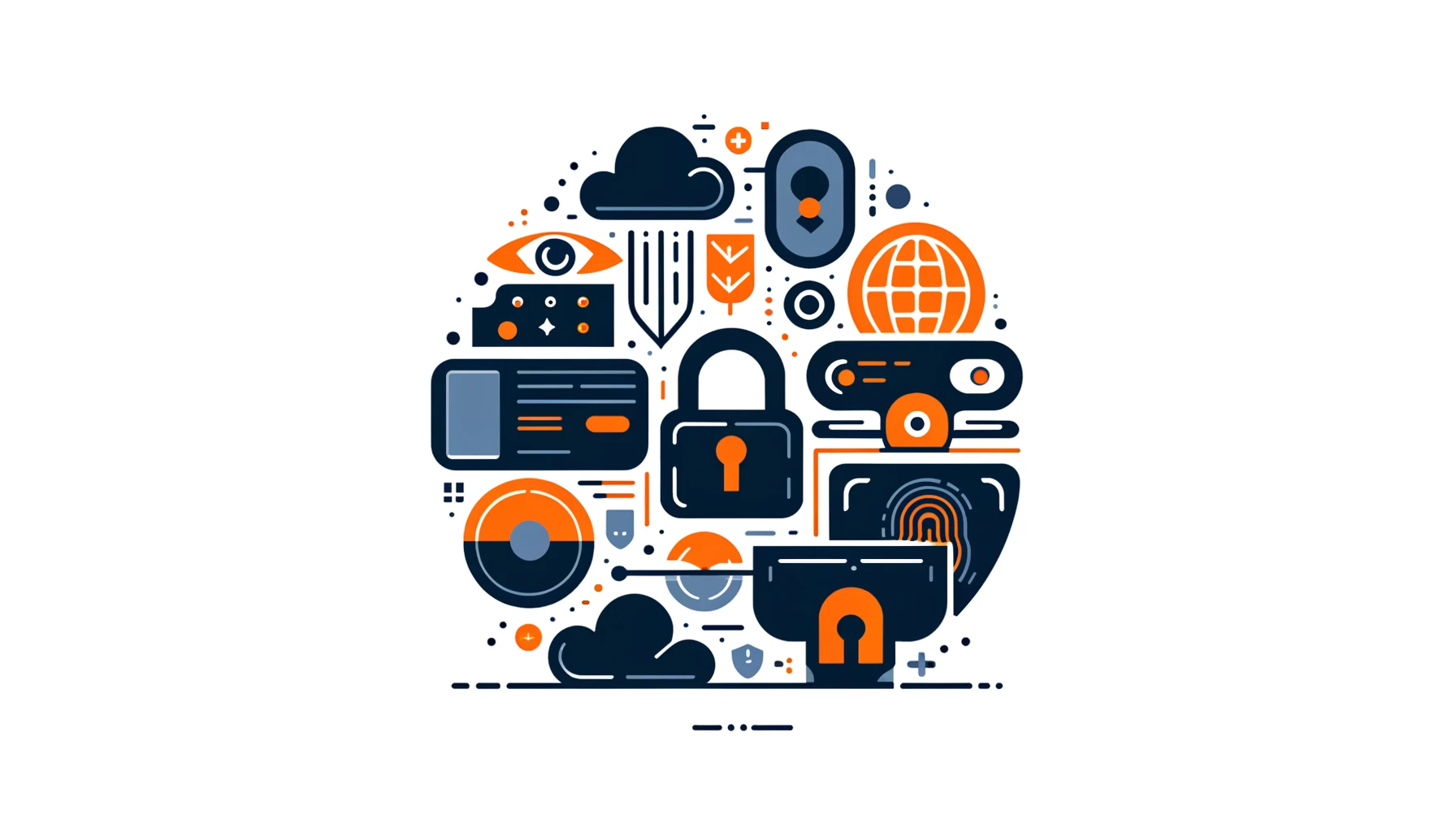
Access Controls

In the digital age, data has become one of the most valuable assets for organizations. Databases and data warehouses store important information for companies. We need to protect this information from unauthorized access.
It is crucial for both small businesses and large corporations to keep this data safe. Unauthorized access to this information can lead to serious consequences. This is where access controls come into play.
Access controls are security measures that regulate who can access specific resources and what actions they can perform. This article will cover the fundamentals of access controls in databases and data warehouses. The topics covered include accessing databases and sharing access responsibilities in the cloud.
You will learn how to access databases, how to control access based on roles. Also we discuss how to control access based on attributes and how to share access responsibilities in the cloud.
Physical and Network Access
The initial step in protecting databases and data warehouses is to manage physical and network access to storage devices. Authorized individuals should be the only ones with physical access to hardware containing sensitive data. They should not gain unauthorized access through the network.
Physical Access Measures
Some common measures to control physical access include:
- Securing server rooms with locks and access cards
- Implementing biometric authentication, such as fingerprint scanners
- Monitoring and logging all physical access attempts
For example, to restrict access to a server room, you can use a command like this in Linux:
sudo chmod 700 /path/to/server/room
This command gives the owner (root) full control over the server room directory.
Network Access and Security Measures
In addition to physical access controls, it’s crucial to secure network access to databases and data warehouses. Some essential network security measures include:
- Firewall Configuration: Implement firewalls to control inbound and outbound network traffic. Configure firewall rules to allow access only from trusted IP addresses or subnets and block unauthorized access attempts.
- Virtual Private Networks (VPNs): Use VPNs to create secure, encrypted connections between remote users and the database network. VPNs ensure that data transmitted over the network remains confidential and protected from interception.
- Network Segmentation: Segment the network into separate zones or subnets based on security requirements. Place databases and data warehouses in a separate network segment, isolated from other less secure systems. This limits the potential impact of a security breach in one segment on the entire network.
- Secure Protocols: Use secure protocols, such as SSL/TLS, to encrypt data transmitted over the network. This protects sensitive information from being intercepted or tampered with during transmission.
- Access Control Lists (ACLs): Implement network ACLs to control access to specific network resources. ACLs define which IP addresses or subnets are allowed or denied access to particular ports or services.
For example, to configure a firewall rule in Linux using iptables to allow access only from a specific IP address, you can use the following command:
sudo iptables -A INPUT -s 192.168.1.100 -p tcp --dport 3306 -j ACCEPT
This command adds a firewall rule to the INPUT chain, allowing TCP traffic from the IP address 192.168.1.100 to the MySQL default port 3306.
By combining physical access controls with robust network security measures, organizations can create a multi-layered defense. Regular monitoring, auditing, and updating of these access controls are essential to maintain the security posture and protect sensitive data from potential threats.
Role-Based Access Control (RBAC)
RBAC is a popular method of controlling access to databases and data warehouses based on the roles and responsibilities of users within an organization. In RBAC, administrators assign specific roles to users, and each role receives a set of permissions. This approach simplifies access management and ensures that users have access only to the resources they need to perform their job functions.
For instance, consider a database with three roles: admin, developer, and analyst. The admin role has full control over the database, while the developer role can only modify specific tables, and the analyst role can only read data. Here’s an example of creating roles and granting permissions in SQL:
CREATE ROLE admin; CREATE ROLE developer; CREATE ROLE analyst; GRANT ALL PRIVILEGES ON database.* TO admin; GRANT SELECT, INSERT, UPDATE ON database.developers_table TO developer; GRANT SELECT ON database.* TO analyst;
By assigning users to specific roles based on their job functions, they will only have access to the resources they need.
Attribute-Based Access Control (ABAC)
ABAC is an advanced access control method that grants access based on attributes associated with users, resources, and environmental conditions. In ABAC, we create access policies based on attributes. They can be user department, resource classification, and time of day. This approach provides more fine-grained control over access compared to RBAC.
For example, consider a policy that allows access to sensitive financial data only during business hours and only for users from the finance department. In ABAC, this policy can be expressed as a combination of attributes:
- User.Department = “Finance”
- Resource.Classification = “Sensitive”
- Environment.Time >= “09:00” AND Environment.Time <= “17:00”
Implementing ABAC requires a policy engine that can evaluate access requests against the defined policies and make access decisions based on the attributes provided.
Cloud Access and Shared Responsibilities
With the growing adoption of cloud computing, many organizations are moving their databases and data warehouses to the cloud. In a cloud environment, access controls become a shared responsibility between the cloud provider and the customer.
The cloud provider is responsible for securing the underlying infrastructure, including physical access to data centers and network security. The customer, on the other hand, is responsible for managing access controls within their cloud resources, such as databases and virtual machines.
Cloud providers offer various access control mechanisms, such as identity and access management (IAM) services, which allow customers to define and manage user access to cloud resources. For example, in Amazon Web Services (AWS), you can use IAM policies to grant or restrict access to specific AWS services and resources.
Here’s an example of an IAM policy that allows read-only access to an Amazon S3 bucket:
{
"Version": "2012-10-17",
"Statement": [
{
"Effect": "Allow",
"Action": [
"s3:GetObject",
"s3:ListBucket"
],
"Resource": [
"arn:aws:s3:::example-bucket",
"arn:aws:s3:::example-bucket/*"
]
}
]
}By attaching this policy to a user or role, you can grant them read-only access to the specified S3 bucket.
Examples and Results
Let’s consider a practical example to illustrate the importance of access controls. Suppose you have a database containing customer information, including sensitive data such as credit card numbers and addresses. Without proper access controls, any user with database access could potentially view or modify this sensitive information.
To mitigate this risk, you can implement RBAC and create roles with specific permissions. You can create a “customer service” role that can only see customer information. Users can update payment details with the “billing” role.
Here’s an example of creating these roles and granting permissions in SQL:
CREATE ROLE customer_service; CREATE ROLE billing; GRANT SELECT ON customers TO customer_service; GRANT SELECT, UPDATE ON customers.payment_details TO billing;
Assigning users to the correct roles ensures they only have access to the necessary information for their job duties. This reduces the risk of unauthorized access and data breaches.
Summary and Conclusion
Access controls are essential for securing databases and data warehouses and protecting sensitive information from unauthorized access. We explored various aspects of access controls, including physical database access, role-based access control (RBAC), attribute-based access control (ABAC), and cloud access with shared responsibilities.
Organizations can make sure that only approved users can access certain resources. They can also control what actions these users are allowed to perform. This is done by putting in place the right access controls. This helps maintain the confidentiality, integrity, and availability of data.
It’s important to regularly review and update access controls to align with changing business requirements and security best practices. Additionally, monitoring and auditing access attempts can help detect and respond to potential security incidents.
DataSunrise: Exceptional Tools for Access Control and Security
For organizations looking to enhance their database and data warehouse security, DataSunrise offers exceptional tools for maintaining access controls and ensuring compliance. DataSunrise provides features such as security and audit rules, data masking, and compliance management. It makes it easier to implement and manage access controls across various database platforms.
To learn more about how DataSunrise can help secure your databases, visit the DataSunrise team for an online demo. Learn how to protect your sensitive data with DataSunrise’s powerful access control and security features demonstrated by our experts.
